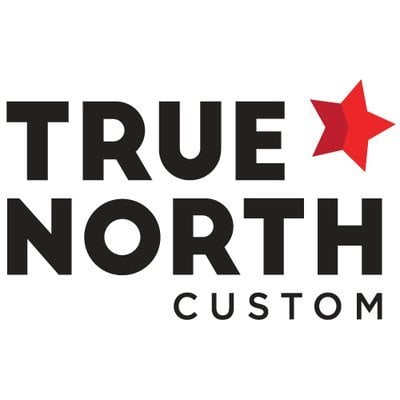
Healthcare personas can be effective tools that align marketing initiatives with the target audience—or a tremendous waste of time. Here’s how to create a patient profile example that ensures you’re reaching the right consumers and driving results.
Considering patient personas as you shape your brand personality and develop service line growth strategies can be a challenging task as a healthcare marketer. At True North Custom, we believe that a thoughtful and highly strategic approach to developing and using a patient profile example to plan, craft and optimize your content and campaigns is critical to making it a worthwhile effort.
There are two primary use cases for identifying personas:
Both are important to your success as a marketer, and there’s nuance to ensuring the personas you create at the service level align with and complement your brand-level persona. On the flip side, it’s key to make sure service line strategies don’t suffer because of an adherence to a brand-level persona. In this article, we’ll cover considerations to keep top of mind as you consider your brand persona strategy and service line level patient personas.
Developing a brand personality and style is key to building relationships with key audiences, particularly in highly competitive markets. For many healthcare providers, the female head of the household is a critical individual to reach.
She is often making decisions for both her own family and aging parents. Further, she is likely talking about her healthcare experiences in social circles and online, influencing the perception others have of your brand. Often, this may be a 30-50-year-old female who’s married with two to four children and parents for whom she’s beginning to make healthcare decisions.
Here’s a brief framework on how you might consider identifying your key brand persona and how she impacts your brand strategy:
Once you’ve considered this and defined your persona, give her a name. Many healthcare organizations even assign an image to a patient profile example. In doing so, you bring her to life and drive alignment across your team to consider her in your work moving forward.
A critical failure in service line campaigns can often be a misalignment between your messaging strategies and the target audience they’re intended to reach. By taking your brand persona and making adjustments to your tone, style and voice to fit a unique service line level patient persona, you’ll be connecting with consumers with messaging designed specifically to resonate with them. Mindfulness about how you execute on this work can lead to dramatic improvements in ad engagement, conversion rates, lead volume, cost per lead and overall ROI.
Here are a number of patient profile examples and tips for defining them that you might consider as you optimize existing and launch new service line campaigns:
Orthopedics, and joint replacement in particular, is a key service line priority for many health systems. The competition for these volumes, high degree of consumer choice and lengthy decision-making journey should all factor into how you decide who you’re targeting.
Here are a few notable factors about joint replacement to consider when defining your service line’s patient profile example:
In general, your women’s health strategies will align with your brand persona. As you build out your campaign plans, you’ll find that specific services you promote need to be tuned for engagement from a very focused audience. Here are a few examples:
Segmenting your women’s health marketing strategies by audience is important and doesn’t need to mean a deviation from your brand level tone, voice and style. Each piece of content or segment of your paid campaign will be reaching a specific consumer, and the messaging and CTA should be aligned with that individual’s needs in a way that complements and supports who you are as a brand.
Mammograms are often a subset of women’s health and imaging priorities for a health system are not major revenue drivers. Capturing screening volumes both builds a relationship with a key healthcare decision-maker and potentially captures cancer volumes at the earliest possible stage.
Many health systems keep mammogram campaigns running throughout the year, with a ramp-up for Breast Cancer Awareness Month in October. This service has a very specific patient profile example:
The way you approach the development of patient personas for mammograms can be mirrored for other consumer choice-driven cancer screenings like colonoscopy, lung CT and more.
Chances are, you’re already using healthcare personas in your marketing strategy, even if you haven’t formally named your brand persona or considered it persona development in your service line marketing efforts. As you optimize campaigns and launch new service line growth efforts, make it a point to think strategically about who specifically you’re hoping to reach with a tactic to make sure you’re developing messaging that will resonate based on the individual’s healthcare goals and demographics.
It’s a worthwhile effort, particularly in today’s environment of intense competition for commercial volumes across the country.
 Jane Crosby
Jane Crosby
EVP Strategy & Business Development
True North Custom
The original version of this page was published at: https://www.truenorthcustom.com/blog/the-hidden-truth-about-healthcare-personas-how-to-create-a-patient-profile-example-you-can-actually-use
True North is your expert healthcare marketing agency, offering full-service, HIPAA-compliant marketing solutions.
Aligning customer needs with business goals is the crux of content marketing. This approach should apply to all content created by an organization—not just the blog.Most marketers ...read more
The discipline of healthcare marketing continues to progress at a rapid pace. This is perhaps best illustrated by strategic plans and budgets that increasingly reflect lower (or no) ...read more
The demands on healthcare marketers have never been greater: differentiate the brand in an increasingly competitive market and guide consumers on their healthcare journey—all ...read more
Learn how to adapt your COVID-19 communications to market and consumer demand with advice from marketing experts at two leading national health systems.As we all work through unseen ...read more